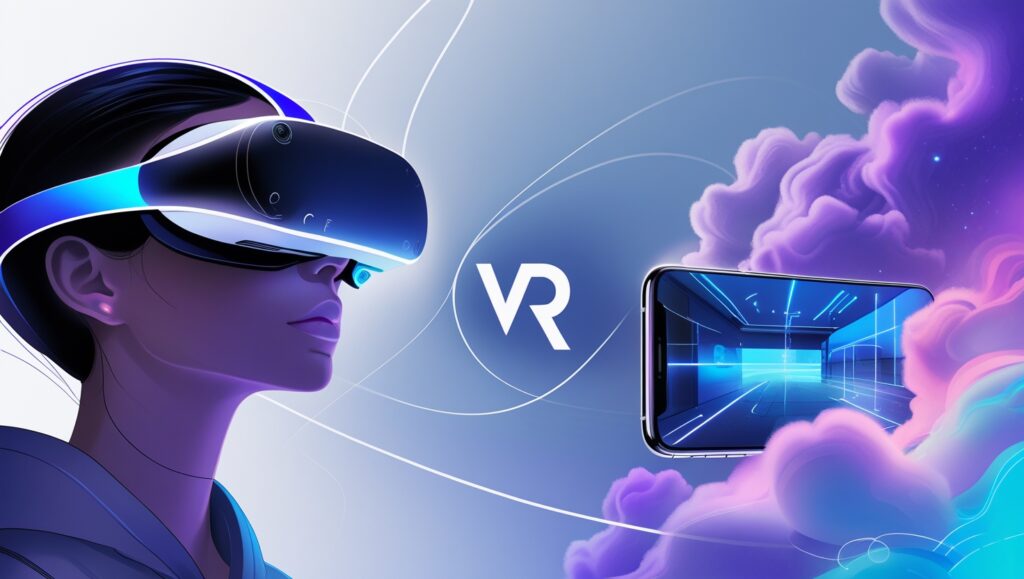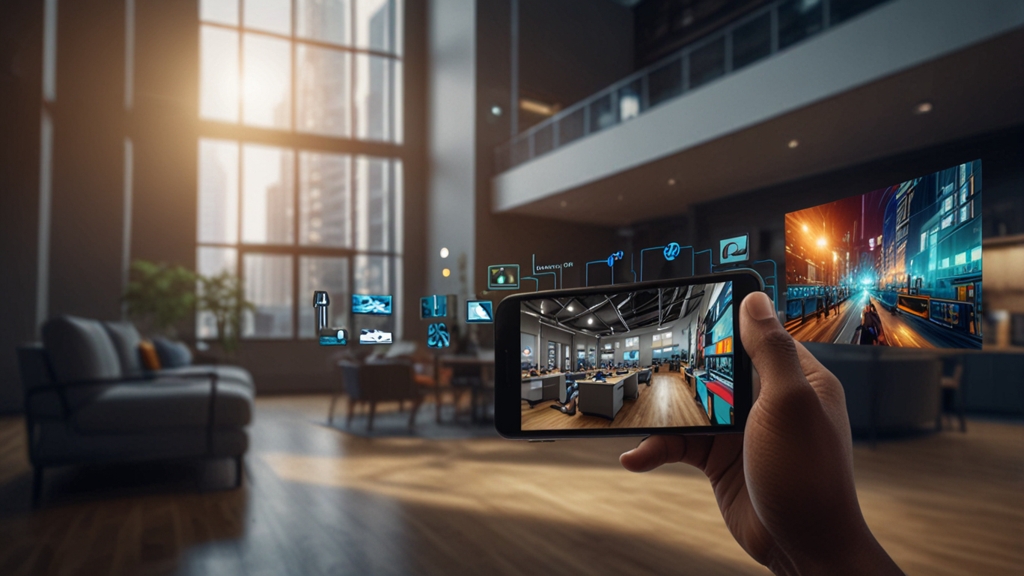AR vs VR: A Comprehensive Comparison
AR and VR are the buzzwords of the technical world that have revolutionized industries and changed the way we used to think about digital content interaction. While both technologies do show some similarities, they offer quite different experiences and applications. In this blog, we dive deep into AR and VR, covering their definition, differences, applications, and future potential.

Definition: AR overlaps digital information on the physical world, enriching the real environment with virtual details. It enables users to interact with augmented components using a wide range of devices, from smartphones and tablets to AR glasses and headsets.
Key Features:
It integrates digital objects into the real world.
- It requires a camera-enabled device for real-time interaction.
Examples are the AR filters in Instagram and Snapchat, or the IKEA Place app.
Applications:
- Retail: Try-on of virtual clothes or glasses, placing furniture in real-world spaces.
- Healthcare: Surgical guidance, anatomy visualization, and medical training.
- Education: AR-enhanced textbooks and educational apps for interactive learning.
- Gaming: Popularized by games such as Pokémon GO.
- Manufacturing: AR-powered maintenance and repair guides.
Definition: VR puts users inside an entirely virtual environment, completely removing them from the physical world. This is effected by special VR headsets and controllers.
Key Features:
- It creates a completely simulated virtual 3D space.
- Requires hardware like VR headsets (e.g., Oculus Quest, HTC Vive).
- Provides a 360-degree immersive experience.
Applications:
- Gaming: Games range from Beat Saber and Half-Life: Alyx for full immersion.
- Medical Care: VR therapy on mental health, pain management, and physical rehabilitation.
- Education: Virtual labs, historical recreations, and immersive training programs.
- Real Estate: Virtual property tours.
- Military and Aviation: Military personnel and pilot training environments.
Differences between AR and VR
| Feature | Augmented Reality (AR) | Virtual Reality (VR) |
|---|---|---|
| Definition | Enhances real world with virtual elements. | Creates an entirely virtual, immersive world. |
| Hardware | Smart phones, tablets, AR glasses | VR headsets, controllers and motion trackers. |
| Interaction | Merges real and virtual objects. | Fully immerses users in a virtual environment. |
| Applications | Retail, education, healthcare, gaming. | Gaming, training, therapy, real estate. |
| Cost | Usually less expensive. | Most of the time involves high-cost hardware. |
How AR and VR Are Transforming Industries
1. Gaming and Entertainment:
- AR : Playing games such as Pokémon GO involve interacting with virtual characters using real-life environments.
- VR: Fully Immersive games transport players into worlds where interactive storytelling can take place.
2. Education:
- AR: Textbooks turn into interactive learning through such features as Google Lens and similar ones.
- VR: Virtual classrooms and simulations make learning more interactive.
3. Healthcare:
- AR: Assists in surgeries by overlaying anatomical details on the patient.
- VR: Finds its application in therapies related to mental health and pain by developing soothing virtual environments.
4. Retail:
- AR: Allows customers to virtually try out products before purchase.
- VR: This is a virtual store for improving the shopping experience of customers.
5. Construction/ Real Estate:
- AR: enables views of property renovation and furniture placement.
- VR: Enables property viewing virtually to the buyers remotely.
Challenges of AR and VR
Yet despite huge potential, significant challenges remain in store for the two technologies:
AR Challenges:
- Device Dependency: The functionality is restricted to camera-enabled devices.
- Privacy Concerns: Many times, AR applications require access to your data and surroundings.
- Development Costs: AR experiences are costly to develop.
VR Challenges:
- High Costs: The headsets and accessories for VR are expensive.
- Motion Sickness: A lot of users face nausea associated with prolonged use.
- Limited Accessibility: Requires dedicated hardware and hence is less accessible than AR.
Future of AR and VR

Augmented Reality: –
AR Glasses: Advanced development in the field is being pursued by companies such as Apple and Google.
5G Integration: Higher speeds mean more advanced real-time powered applications for AR. –
AI Integration: AI-powered AR can provide more intelligent and personalized interaction.
Virtual Reality: –
Metaverse Development: The development of virtual worlds will be interconnected by companies such as Meta, earlier known as Facebook.
Advanced Hardware: Lighter and cheaper VR headsets lead to greater adoption. –
Training and Simulation: Diversification into areas of sports, military, and corporate training.
Conclusion
Both AR and VR are transformative technologies that change how we relate to the world and digital content. While AR enhances real-world experiences through the blending of digital elements, VR creates completely immersive environments for users. Both come with their unique strengths and challenges, but together they can revolutionize industries like gaming, education, healthcare, and retail. As AR and VR technologies continue to evolve, so will their applications, affording hitherto unimagined opportunities for innovation and creativity. Whether through an AR-powered shopping app or a VR-based therapy session, the future of digital interaction has never looked brighter.









